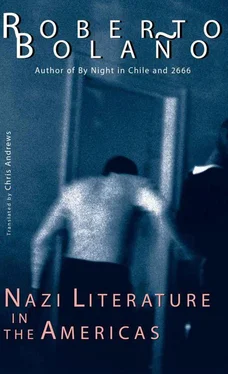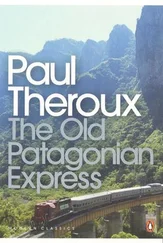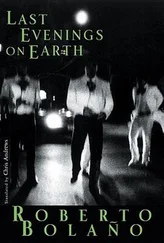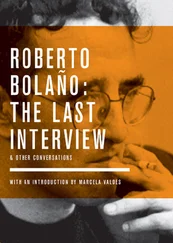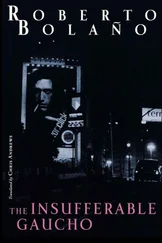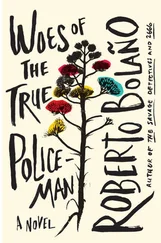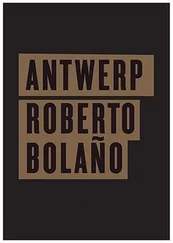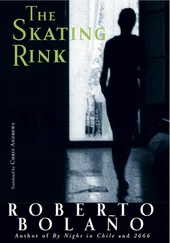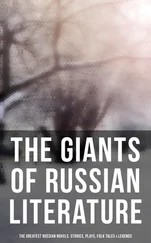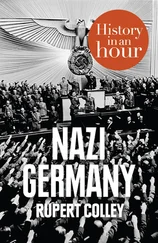And that was all until 1955 and the publication of his Critique of Sartre’s Being and Nothingness, Volume I (350 pages), which deals only with sections two and three of Sartre’s introduction, “In Pursuit of Being”: “The Phenomenon of Being and the Being of the Phenomenon” and “The Prereflective Cogito and the Being of the Percipere .” In his denigration, Fontaine ranges from the pre-Socratic philosophers to the movies of Chaplin and Buster Keaton. Volume II (320 pages) appeared in 1957, dealing with the fifth and sixth sections of the introduction to Sartre’s work, “The Ontological Proof” and “Being-in-Itself.” It would be an exaggeration to say that either book sent so much as a ripple through philosophical and academic circles in Brazil.
In 1960, the third volume appeared. In exactly 600 pages it broaches the third, fourth and fifth sections (“The Dialectical Concept of Nothingness,” “The Phenomenological Concept of Nothingness” and “The Origin of Nothingness”) of the first chapter (“The Origin of Negation”) in Part I (“The Problem of Nothingness”) and the first, second and third sections (“Bad Faith and Falsehood,” “Patterns of Bad Faith,” “The ‘Faith’ of Bad Faith”) of the second chapter (“Bad Faith”).
In 1961, a sepulchral silence, which Fontaine’s publisher made no effort to break, greeted the publication of the fourth volume (555 pages), which tackles the five sections (“Presence to Self,” “The Facticity of the For-Itself,” “The For-Itself and the Being of Value,” “The For-Itself and the Being of Possibilities,” “The Self and the Circuit of Selfness”) of the first chapter (“Immediate Structures of the For-Itself”) of Part II (“Being-for-Itself”) and the second and third sections (“The Ontology of Temporality” and “Original Temporality and Psychic Temporality: Reflection”) of the second chapter (“Temporality”).
In 1962, the fifth volume (720 pages) appeared, in which, passing over the third chapter (“Transcendence”) of Part II, almost all the sections of the first chapter (“The Existence of Others”) of Part III (“Being-for-Others”), and the whole of the second chapter (“The Body”), Fontaine makes a wild and reckless leap to the third section (“Husserl, Hegel, Heidegger”) of the first chapter and the three sections (“First Attitude Toward Others: Love, Language, Masochism,” “Second Attitude Toward Others: Indifference, Desire, Hate, Sadism” and “‘Being-With’ ( Mitsein ) and the ‘We’”) of the third chapter (“Concrete Relations with Others”) of Part III.
In 1963, while he was working on the sixth volume, his siblings and nephews were obliged to have him interned once again in the clinic, where he remained until 1970. He never resumed his writing. Death took him by surprise seven years later in his comfortable apartment in the Leblon neighborhood of Rio, as he listened to a record by the Argentinean composer Tito Vásquez, and looked out of the window at night falling over the city, passing cars, people chatting on the sidewalks, lights coming on and going out, and windows being closed.
Matanzas, 1908–New York, 1980
The reputation of Ernesto Pérez Masón, realist, naturalist and expressionist novelist, exponent of the decadent style and social realism, rests on a series of twenty works, beginning with the splendid story “Heartless” (Havana, 1930), a nightmare with Kafkaesque echoes, written at a time when the work of Kafka was little known in the Caribbean, and ending with the abrasive, caustic, embittered prose of Don Juan in Havana (Miami, 1979).
A rather atypical member of the group that formed around the magazine Orígenes , he maintained a legendary feud with Lezama Lima. On three occasions, he challenged the author of Paradiso to a duel. The first time, in 1945, the affair was to be decided, so he declared, on the little field he owned outside Pinar del Río, which had inspired him to write numerous pages about the deep joy of land ownership, a condition he had come to see as the ontological equivalent of destiny. Naturally Lezama spurned his challenge.
On the second occasion, in 1954, the site chosen for the duel, to be fought with sabers, was the patio of a brothel in Havana. Once again, Lezama failed to appear.
The third and final challenge took place in 1963; the designated field of honor was the back garden of a house belonging to Dr. Antonio Nualart, in which a party attended by painters and poets was under way, and it was to be a fist fight, in the traditional Cuban manner. Lezama, who by pure chance happened to be at the party, managed to slip away again, with the help of Eliseo Diego and Cintio Vitier. But this time Pérez Masón’s show of bravado landed him in trouble. Half an hour later the police arrived and, after a short discussion, arrested him. The situation degenerated at the police station. According to the police, Pérez Masón hit an officer in the eye. According to Pérez Masón, the whole thing was an ambush cleverly contrived by Lezama and Castro’s regime, in an unholy alliance forged with the express purpose of destroying him. The upshot of the incident was a fifteen-day prison term.
That was not to be Pérez Masón’s last visit to the jails of socialist Cuba. In 1965 he published Poor Man’s Soup , which related — in an irreproachable style, worthy of Sholokov — the hardships of a large family living in Havana in 1950. The novel comprised fourteen chapters. The first began: “Lucia was a black woman from. .”; the second: “Only after serving her father. .”; the third: “Nothing had come easily to Juan. .”; the fourth: “Gradually, tenderly, she drew him towards her. .” The censor quickly smelled a rat. The first letters of each chapter made up the acrostic LONG LIVE HITLER. A major scandal broke out. Pérez Masón defended himself haughtily: it was a simple coincidence. The censors set to work in earnest, and made a fresh discovery: the first letters of each chapter’s second paragraph made up another acrostic — THIS PLACE SUCKS. And those of the third paragraph spelled: USA WHERE ARE YOU. And the fourth paragraph: KISS MY CUBAN ASS. And so, since each chapter, without exception, contained twenty-five paragraphs, the censors and the general public soon discovered twenty-five acrostics. I screwed up, Pérez Masón would say later: They were too obvious, but if I’d made it much harder, no one would have realized.
In the end, he was sentenced to three years in prison, but served only two, during which his early novels came out in English and French. They include The Witches , a misogynistic book full of stories opening onto other stories, which in turn open onto yet others, and whose structure or lack of structure recalls certain works of Raymond Roussel; The Enterprise of the Masons , a paradigmatic and paradoxical work, saluted on its publication in 1940 by Virgilio Piñera (who saw it as a Cuban version of Gargantua and Pantagruel), in which it is never entirely clear whether Pérez Masón is talking about the business acumen of his ancestors or about the members of a Masonic lodge who met at the end of the nineteenth century in a sugar refinery to plan the Cuban Revolution and the worldwide revolution to follow; and The Gallows Tree (1946), written in a dark, Caribbean Gothic vein, unprecedented at the time, in which the author reveals his hatred of Communists (although, oddly, he devotes a whole chapter, the third, to the military fortunes and misfortunes of Marshall Zhukov, the hero of Moscow, Stalingrad and Berlin, and that chapter, taken on its own — it has in fact little to do with the rest of the book — is one of the strangest and most brilliant passages in Latin American literature between 1900 and 1950), as well as his hatred of homosexuals, Jews and blacks, thus earning the enmity of Virgilio Piñera, who always admitted, nevertheless, that the novel, arguably the author’s best, had a disquieting power, like a sleeping crocodile.
Читать дальше
